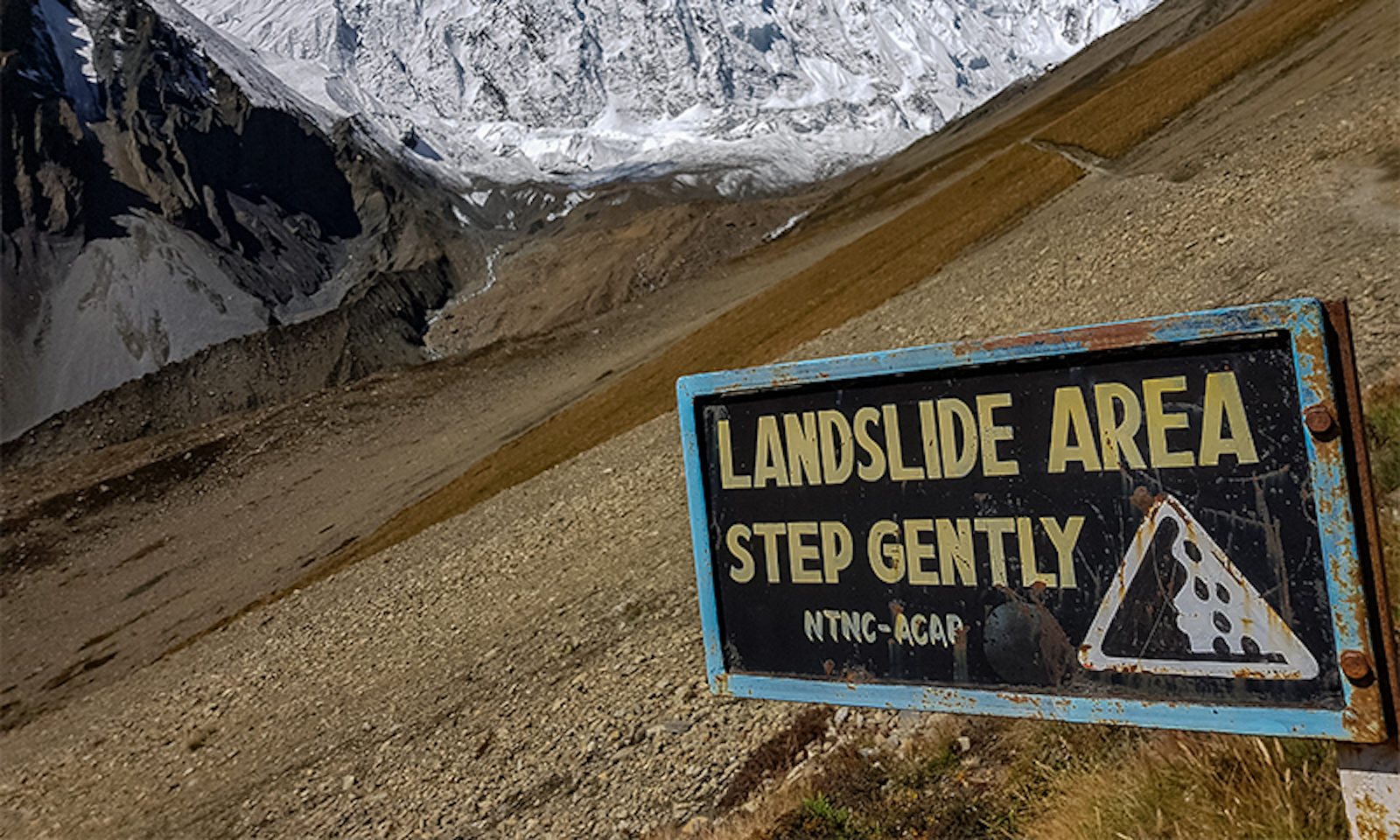Just before noon on April 25, 2015, a devastating earthquake rocked central Nepal with a magnitude of 7.8. Approximately 9,000 people were killed, with thousands more injured and hundreds of thousands of buildings destroyed. The country is one of the most seismically active places on the planet. But its most concerning environmental hazard isn’t actually earthquakes—it’s landslides.
The Gorkha earthquake triggered some 25,000 landslides across central and western Nepal over the following weeks. Nepal has always suffered a remarkable number of landslides, but in the years since Gorkha, the count has rapidly increased. The question is, why are the numbers of landslides surging?
The landslide numbers really begin to ratchet up after 2015.
A recent study of landslide disaster data in Nepal found that between 2011 and 2020, the average annual “density” of landslides in Nepal jumped fourfold (to more than three events per 1,000 square kilometers). That’s a staggering increase. Nepal’s dramatic vertigo-inducing landscape of jagged snow-capped Himalayan peaks—Mt. Everest is just one of many—increasingly frequent and intense monsoon rains, and growing urbanization all played a part. But the researchers say the jump has a lot to do with the Gorkha earthquake and a lesser-known factor: roads.
Urban and semi-urban areas that had already been damaged during the Gorkha earthquake were most impacted by the increase in landslides, according to the data. This suggests that the Gorkha quake did some fundamental damage to the integrity of Nepal’s mountain soils—also supporting this idea, the landslide numbers really begin to ratchet up after 2015, with the density of events tripling in the five years after the disaster. Landslide frequency rose in all seasons, but particularly in the summer monsoon months, when torrential rains tear down Nepal’s slopes and lead to deadly flooding. Monsoon season in Nepal is projected to become even more intense and destructive in the future.
But another key culprit for the recent swell of landslides in Nepal may be a rise in urbanization—and the related construction boom that began in 1990 and continues today—the authors of the paper say. A new central government “started allocating huge budgets to local governments,” and large portions of that money was spent on road construction, says Keshab Sharma, a geotechnical engineer at BCG Engineering Inc., Canada, and an author of the new landslide study.
And these roads themselves became a problem, Sharma explains. In many cases, no land surveys were completed, nor were assessments required to determine how to most safely construct each roadway. Now many of these roads are destabilizing Nepal’s mountain slopes, especially during the rainy season.
The demand for new roads hasn’t fallen off. Nepal’s urban population increased from 17 percent to 21 percent between 2011 and 2020, and this movement is escalating demand. Of course, “people want the roads,” Sharma says.
As rainfall patterns change with our tumultuous climate and urban populations continue to grow, Sharma believes the best way to mitigate Nepal’s landslide risk is to design safer infrastructure policy—with enforcement. Building better roads, he says, could help Nepal build a highway to a safer future. ![]()
Lead image: Anna_plucinska / Shutterstock




























